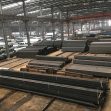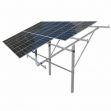Why to keep a regular maintenance for your curtain wall building
Both curtain walls and window walls are supposed to keep a regular maintenance in applications in order to maximize their service life. For example, perimeter sealants, when properly designed and installed, have a typical service life of 10 to 15 years. In that regard, it is very important to keep the exterior seals in good condition.

In practical applications, the exposed glazing seals and gaskets require inspection and maintenance to minimize water penetration, limit exposure of frame seals, and protect insulating glass seals from wetting. Preformed tape and dry gasket are the most common form of the exterior seal on most of curtain wall structures in applications. In some extreme cases, curtain wall systems with exposed exterior sealants, is advisable to plan on localized inspection and maintenance to the sealants on a three to five-year cycle. Such maintenance work can be conducted in conjunction with regular cleaning of the wall. In addition, the design of curtain walls should allow for easier replacement of defective components. The service life of even the most durable systems may be shorter than that of adjacent cladding such as stone or brick masonry veneer. Therefore, the design of the curtain wall interface with perimeter construction should permit removal and replacement without removing adjacent wall components.
Furthermore, in most of curtain wall construction, the most important factor that will lead to a successful enclosure is proper installation. In other words, type of curtain wall systems can be expertly designed but if imperfectly installed, will not perform as designed. There must also be careful detailing. Holes in the cladding system, too much sealant that blocks drainage paths, and improper compression of the gaskets should all be avoided during the construction. Commissioning and regular cladding inspection can greatly improve the performance of curtain wall systems in applications.
In the current market, aluminium curtain wall becomes very popular, so frames with less conductive materials such as fiberglass or wood can help reduce thermal bridging. More attention needs to be spent on interface details. The interface connections between window walls, curtain walls, and other cladding types are not only thermally weak spots but present problems with water and air leakage as well. When considering air tightness, the drawings of the construction details should be checked carefully including a virtual simulation of the sequence of construction activities to detect all 3D air paths that may develop due to the various dry joints. Meanwhile, sealing these paths should be done carefully and with supervision. Especially the facade design should start with the assumption that the external glazing seals, perimeter sealant joints, and sills will leak.
Tel: +86 18202256900 Email: steel@tjdpbd.com










